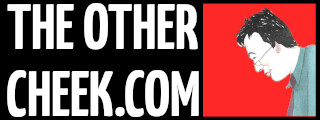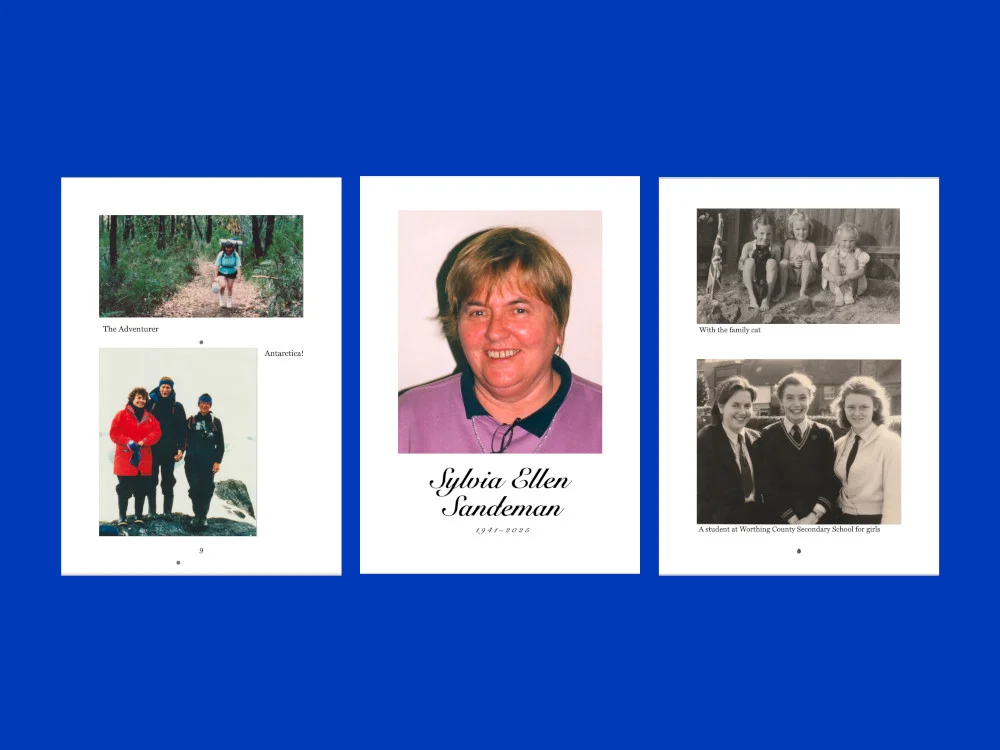A eulogy by John Sandeman at the thanksgiving service for Sylvia Sandeman at Rosanna Baptist Church on Thursday June 12, 2025.
Today, we farewell our big sister, aunt, and great aunt, Sylvia Ellen Sandeman.
We are a complicated family, one natural child, the big sister, Sylvia, to four adopted boys, Tony, David, Peter and John, in that order.
Sylvia was born in England in August 1941 to her mother, Ethel Mary Sandeman. Her father, Colin James Sandeman, was soon away at war, and Mary and Colin were apart for five years.
“The day my father returned from war was a significant childhood memory,” Sylvia wrote for Rosanna Baptist. “I still have the picture in my head of him standing on the front door step.
“I also remember every time we increased our family and the coming of another boy who lived with us for eight months while his mother was in prison.”
Yes, there was a way of increasing a family while Dad was away. There were evacuee boys, Ken and Reggie, and I think their mother, who lived with Mum and Sylvia during the war.
Afterwards, four boys – Tony, David, Peter, and I – came into the family permanently. Sylvia welcomed us all. She went off to London to study radiography, and the rest of the family migrated to Australia.
When Sylvia arrived three years after the rest of us, the family was already ensconced in a large bluestone house in the part of Adelaide that slopes up to the Adelaide Hills. She arrived as a fully qualified radiographer and settled into a stint at the Royal Adelaide Hospital. Peter and I had a lot of schooling to go. David left school early to begin a life on the land, working on farms and for a time as a zookeeper, and Tony was headed into the Savings Bank.
Sylvia’s passion for Christianity led her to dive into a three-year residential course at Adelaide Bible Institute in Victor Harbour. Strong, enduring relationships from that time remain. That pattern repeats at each stage of Sylvia’s journey.
After ABI, Mooropna Hospital, and then Cabrini in Melbourne, where Sylvia worked for 34 years in medical imaging.
We’ll hear from Tim Costello on discovering Sylvia as a stalwart of of St Kilda Baptist when he arrived to pastor a church he was told nobody wanted to take on.
.
But she was here at Rosanna in the morning.
You see, one church was never enough. There were St Kilda Baptist and Rosanna Baptist. And then there was South Yarra. And for a time, there had been Shepparton Baptist. Yes, Baptist churches only. She managed to be a powerhouse wherever she went. And very Baptist in just pitching in and doing things without a lot of permission seeking.
Syvia kept everything. So, I can confidently tell you that in 1949, she won second place for under-eight paintings in the Brighton and District Sunday School Union, Worthing area, and she kept that painting.
She won an embroidery prize in 1952, awarded by the Worthing Youth Council. And she was elected a member of the London County Association of Changeringers in 1962.
And then there’s the academic awards. She became a registered radiographer in 1964, and she has diplomas from Adelaide Bible Institute and the Melbourne College of Divinity, now the University of Divinity. She also has a Dip Ed from Melbourne Uni, and she was a couple of subjects short of a social work qualification, where she remembered Hazel Hawke as a classmate.
In hospital, Sylvia reminded me of how she chose to be a radiographer. One afternoon, she and Mum were listening to a BBC programme on careers, and radiography was that day’s topic. “I think you could do that,” said Mum, gently encouraging Sylvia. And at 15, Sylvia geared her schoolwork in that direction.
Mum was the backbone for Sylvia’s early faith formation. “My mother,” she writes, who sang me hymns and read me Bible stories every night, had been a Campaigner – a similar organisation to the Girls’ Brigade.” Her Godmother gave her a copy of Daily Light, a daily Bible guide and “By Searching,” a biography of missionary Isabel Kuhn’s struggles as a young woman; and I found them the other day, perhaps the most ragged and worn out books in Sylvia’s great big collection..
But another side comes out in a sermon Sylvia preached at South Yarra, where she confessed to being a Martha rather than a Mary. Martha, who worried about the housework, was concerned when Jesus came to visit one day.
Sylvia preached: “It is a story that I have always struggled with – knowing that I am sure that Jesus would have said to me what He said to Martha, and also that I hear these words of Martha as condemnation and difficult to accept – “Does Jesus not know these things do need to be done?”
“As a teenager my mother would say to me – “Can’t you see that the washing up has to be done?” and over the years I have learnt in fact the answer to that question is – “No I didn’t but I am happy to do it if she asked me to.” But for her, that was not the point. I was supposed to see that it needed to be done and do it without her asking me.”
Struggling with the passage Sylvia reads in a commentary: “This short passage – it is only four verses – is capable of being misread in a couple of ways – firstly, it is not about women”, and Sylvia said “instantly I disagreed because I think this whole passage is in fact all about women. In a moment I changed my focus and saw something I had never seen before.”
Describing all the worries Martha has – the things Sylvia’s Mum would have expected, my sister says “Mary did the unthinkable thing, it was not the fact that she had not fulfilled the role as a hostess in the situation – the role expected – this was bad enough – she did in fact the a really inconceivable thing – Mary went and sat down at Jesus feet – this simple action which for us would almost pass unnoticed was in fact highly contentious in that day’s society. This was the place and posture of a disciple of any teacher in the ancient world, so Mary in one act had broken the rules that reserved study and learning for males – this was no place for a woman – what was she thinking of?”
Well, Sylvia was a thinker. Making her way as a strong independent woman, before the next wave of feminism came along to help. Her faith was not static, perhaps onec pietistic and narrow, it grew.
Sylvia was the big sister who showed us you could be bold, explore the world, be in community wherever you were, and dig deep in making the world a better place. And that change starts local. For example, in the Rosanna area, she was a founder of S T A Y, short-term accommodation for Youth. It was more than an idea; it became a practical reality. Sylvia was an activist, networker, and Community organiser in and out of church.
My brother Tony and wife Pam travelled to visit Sylvia in rehab:
TONY: We asked Sylvia about her hard-fought battle, “Are you losing?” She replied, “No, I am gaining,” such was her positive faith in God for the life beyond.
It came as a shock to Peter and me that Sylvia died two Thursdays ago. Peter had seen her on the Monday, in the hospital ward, and had a great chat with her. But sitting on the plane, he got a message that her breathing was difficult and she was back in the ICU.
On Thursday, two Thursdays ago, it was clear that she was not going to bounce back like she had so many times, and it was time to say goodbye. Pastor David came, and I was able to say farewell, and as Peter arrived, I heard the clearest word of the late afternoon: “Peter”
And there will be a heavenly greeting: “Sylvia.”
PETER: And just as Sylvia waited to say goodbye, we now say goodbye to Sylvia, thanking her and recognising the huge impact she has had on our lives as partner to Mark, sister, sister-in-law, aunt, godmother, friend, leader, teacher, colleague, craftsperson, behind-the-scenes organiser, deacon, songstress and stirrer.

